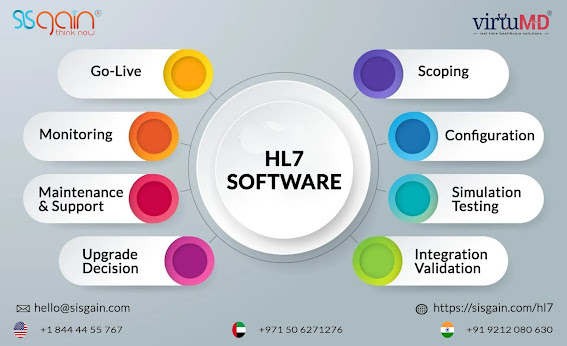HL7 Interface: Simplifying Healthcare Data Integration
HL7 Integration Solutions | HL7 Interface Development - SISGAIN
Healthcare providers today generate a massive amount of data, ranging from electronic medical records (EMRs) to patient billing information, lab results, and more. This data needs to be shared between different healthcare systems, providers, and payers to ensure seamless patient care and accurate billing.
To facilitate this data exchange, the healthcare industry has adopted the Health Level Seven (HL7) standards. HL7 is a set of international standards for the exchange, integration, sharing, and retrieval of electronic health information. The standards enable healthcare providers to transfer patient information seamlessly and accurately between disparate systems, regardless of their vendor or platform.
HL7 Interface
HL7 interface is the software that enables communication between different healthcare systems using the HL7 standard. HL7 interface software can be designed to receive, transform, and transmit data to ensure that information is accurate, complete, and timely.
HL7 integration can be used to connect disparate systems such as EMRs, billing systems, lab systems, and more. This integration can help providers avoid manual data entry errors and reduce the risk of medical errors. HL7 integration can also reduce the administrative burden of data entry, freeing up staff to focus on patient care.
HL7 Software
There are several HL7 software products available on the market, ranging from simple interfaces to complete integration platforms. Some of the popular HL7 software products include Mirth Connect, Corepoint Integration Engine, and HealthShare.
These software products provide a range of features, such as support for various HL7 standards, data mapping, and transformation, message routing, and alerting, and support for multiple communication protocols.
HL7 Interface Developer
HL7 interface development requires specialized knowledge and expertise. An HL7 interface developer needs to have a thorough understanding of HL7 standards, communication protocols, and healthcare workflows.
They also need to be familiar with programming languages such as Java, C++, or Python and have experience working with healthcare data formats such as XML or JSON. HL7 interface developers need to work closely with healthcare providers to understand their unique needs and workflows and develop interfaces that meet those needs.
In conclusion, the HL7 interface plays a critical role in facilitating the exchange of healthcare data between disparate systems. It helps providers reduce errors, increase efficiency, and improve patient care. Healthcare providers should carefully evaluate their HL7 interface options and select the product that best meets their unique needs. Additionally, working with an experienced HL7 interface developer can help ensure a successful integration project.

No comments:
Post a Comment